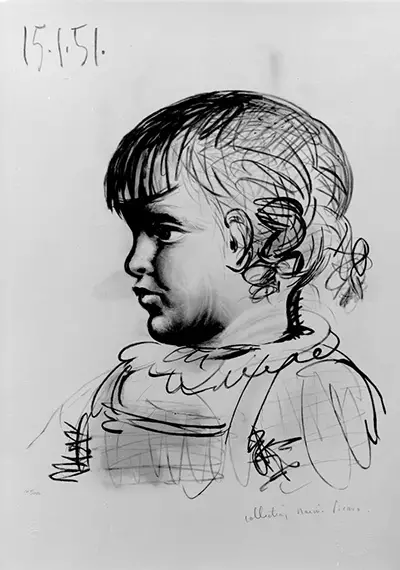It was around this period that he exhibited his pieces to the Third Sculpture International which took place at the Philadelphia Museum of Art. The Portrait of Child 1951 features the style of expressionism. Pablo Picasso adopted this style after having practiced with other myriads of styles some of which he created himself (e.g. collage, cubism and some aspects of neo-expressionism). These approaches towards art were well appreciated up to the 1960s.
The original title of this painting was Portrait d'Enfant which translates to Portrait of a Child. Pablo Picasso was known not to name most of his pieces of work. However, he would engrave the date or time when he created the portrait. The portrait of a child has the marking 15.1.51 which was taken to symbolize the exact day and month in 1951 when he drew the portrait. The multitalented sculptor, ceramist, and painter started his work at the age of seven where he had training from his father in oil painting and figure drawing. Throughout his career, he had his work differentiated by periods such as Blue Period of 1901-1904, rose period of 1904-190s and Analytic cubism of 1909 to 1912 among several others. Each period symbolized the onset of a new style of painting either pioneered or influenced by the artist.
The Portrait of Child 1951 falls in the period of his later years after World War II. Picasso created this painting and several others like it when he was quite old. At that age, he had started approaching a bold kind of art nourished with colors. Though they weren’t appreciated much at the time art enthusiasts realized that these paintings and portraits featured the modern neo-expressionism style after his death. A similar piece of art to the Portrait of a Child is the Picasso’s Claude Writing which he also created in 1951. It has been interpreted in many ways, the common ones being that it symbolizes his son or an alter ego of himself.

